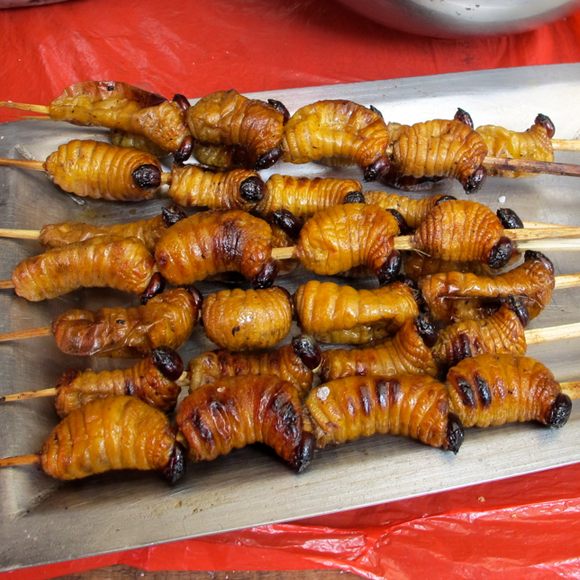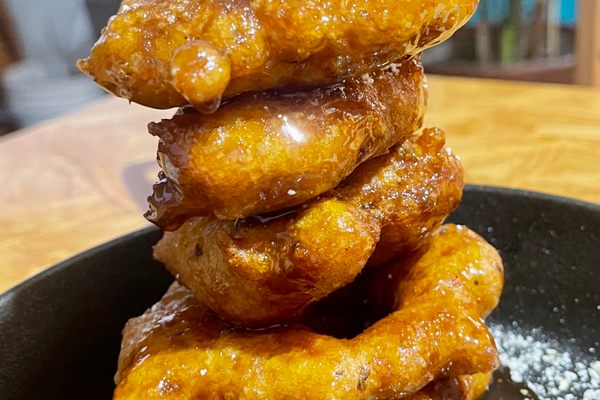Markets in the Peruvian city of Iquitos feature a skewered, barbecued delicacy that has been likened to everything from hazelnut to butter. It’s the succulent suri grub.
Suri are the larvae of the palm weevil, an insect that’s prevalent throughout the Amazon. Also known as the cocotero in Peru, the weevil burrows into the aguaje tree to lay its eggs. Once they hatch, the grubs feast on the oily palm bark. Some say this is the source of suri’s rich, fatty flavor.
Most street vendors make suri in the popular Peruvian style known as anticucho, which involves marinating them in spices and then grilling them. The result is a snack that’s crispy, yet still creamy on the inside. The grubs’ fatty content also make them ideal candidates for frying. In a dish known as chicharrón de suri, cooks season them with salt and garlic, then fry the lot with green plantains.
But you can also enjoy the grubs raw. It’s important to first remove the insect’s head, pinchers, and intestines. Then simply suck out the rest of its buttery, gelatinous insides.
Suri are both delicious and a good source of protein, vitamins A and E, and beta-carotene. They’re also a sustainable business for Amazon harvesters. As long as there are palm trees, there will be palm weevils feasting off them. And as long as there are palm weevils, there will be tourists and Peruvians feasting off their barbecued larvae.
Written By
 Sam OBrien
Sam OBrien
Sources
- www.rainforestcruises.com/jungle-blog/eating-suri-in-the-amazon
- perufood.blogspot.com/2008/08/amazonian-grub-so-suri.html
- munchies.vice.com/en_us/article/nz9kqq/how-to-eat-the-jungle-before-it-eats-you
- www.tandfonline.com/doi/abs/10.1080/03670244.2001.9991635
- books.google.com/books?id=xkcoAQAAMAAJ&q=suri+grubs&dq=suri+grubs&hl=en&sa=X&ved=0ahUKEwiz1uLu55vYAhVE7oMKHQ1YD5wQ6AEISzAG
- books.google.com/books?id=J01UDgAAQBAJ&pg=PT480&dq=suri+grubs&hl=en&sa=X&ved=0ahUKEwiz1uLu55vYAhVE7oMKHQ1YD5wQ6AEIUDAH#v=onepage&q=suri%20grubs&f=false














